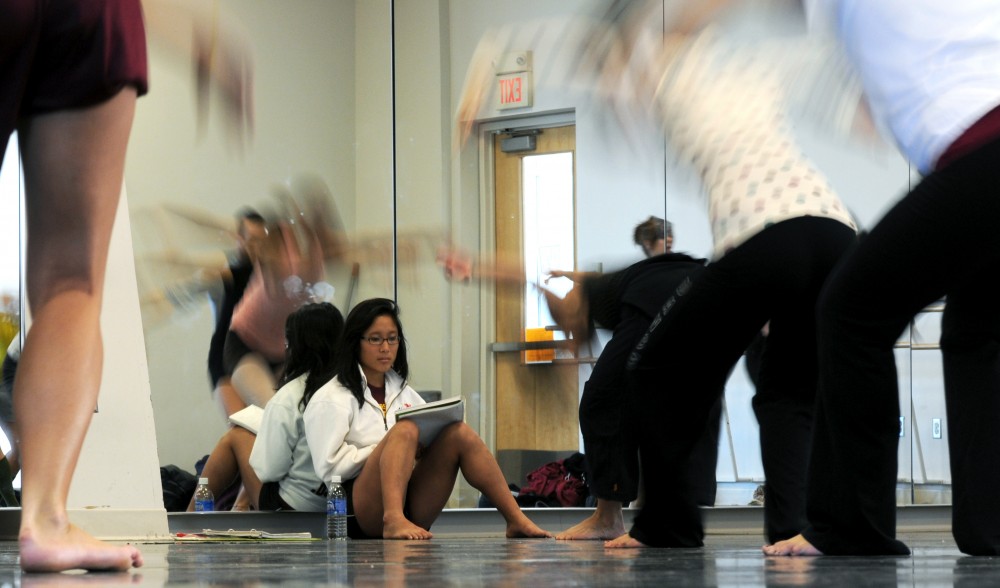Although Molly StoltzâÄôs research occasionally required her to wear gloves, she wasnâÄôt working in a lab. Instead of protecting her from chemicals, the gloves protected the fragile documents she used to get to know Mura Dehn, a little-known concert jazz dance pioneer who died 21 years ago. As Stoltz, a dance senior, finishes up research funded through the Undergraduate Research Opportunities Program , a fresh batch of students will have put together applications by MondayâÄôs deadline for fall grants. The program received a record number of applications last fall, and Vicky Munro, UROP coordinator, said she expects another big round. The program began in 1985, when it offered students $750 for 120 hours of research with a faculty mentor. Since then, its popularity and funding have increased significantly. The amount per grant has nearly doubled âÄî itâÄôs now at $1,400 âÄî and the number of approved applicants has increased by more than 60 percent, with 607 approved last year. Since the University established an office of undergraduate research about two years ago, Munro said officials have been more proactive about getting students involved and are able to fund more students each year. The number of approved applications increased more than 20 percent between the 2006-2007 school year and 2007-2008. The University is supportive âÄî the eventual goal is to give 1,000 UROP grants each year, and Munro said the program is pushing to get more money. UROP is funded annually through the University budget. Sometimes the Duluth campus or the ProvostâÄôs office chip in. ThereâÄôs a practical reason the University is pushing more students to get involved in research earlier on. Students who get hands-on learning experience have better graduation rates, Munro said. It gets them engaged in their learning, so theyâÄôre more likely to complete class work and be excited about their field, she added. Both Stoltz and Leo Kucek, a chemical engineering senior, echoed that sentiment. ItâÄôs hard to really understand course material, Kucek said, until âÄúyou get your hands a little slimy.âÄù In KucekâÄôs case, the slime was literal. He worked with Professor Roger Ruan and graduate students on finding a way to screen different types of algae for their oil content. Algae convert light energy into oils, carbohydrates and proteins. Much like humans store food energy as fat when they donâÄôt use it right away, algae accumulate oils and carbohydrates if theyâÄôre given more light than they can use. People are interested in extracting this oil and using it to produce biodiesel and even jet fuel, Kucek said. Exposure to the challenges of graduate level work allows him to say confidently that itâÄôs for him. âÄúWe donâÄôt have any PhDâÄôs in our family,âÄù he added. Marshak said UROP is one way for students to get actively involved âÄî rather than passively going through the motions of getting a degree. A key component of student success is interaction with faculty, Professor Marvin Marshak, faculty director of undergraduate research, said. This means seeing professors as humans. âÄúI hate to dispel the myth that professors were dropped from the sky by immaculate conception at age 40, but we all went to college,âÄù he told incoming first years earlier this year. Stoltz said faculty mentors have been ready to help her at every point. For her first UROP, she set out to trace the family tree of concert jazz dance pioneers. When she came across a 1930s newspaper preview for a dance show by a woman sheâÄôd never heard of, she followed the lead to the archives of a New York City library. Dehn had been skipped over in most treatments of concert jazz dance history, but Stoltz was able to highlight her influence and root her to the jazz dance family tree. Her research was tedious at times âÄî but ultimately, âÄúYou get paid to read,âÄù Stoltz said. âÄúThatâÄôs cool.âÄù

Image by Marija Majerle
Electric Car
Deadline approaches for UROP grants
Published October 2, 2008
0
More to Discover







